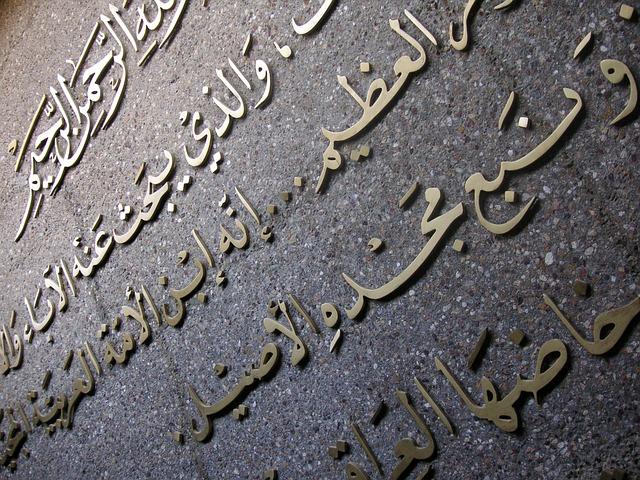In the world of cinema, where silver screens transform into portals of imagination, the allure of a blockbuster captivates audiences worldwide. Yet, behind the seamless visual spectacle lies a hidden realm of orchestrated chaos and meticulous artistry. Welcome to the backstage odyssey of filmmaking, where directors, actors, and crew converge in a symphony of creativity and precision. In this article, we pull back the curtain to reveal the untold stories and intricate processes that breathe life into Hollywood’s grandest productions. Join us as we delve into the fascinating world behind the scenes, uncovering the magic and mayhem that bring cinematic dreams to fruition.
Crafting Cinematic Magic: The Art of Set Design
The world of set design is a mesmerizing blend of creativity and meticulous planning, where every detail contributes to the larger narrative of a film. Set designers are the architects of imagination, transforming scripts into tangible worlds that actors can inhabit. This process involves a seamless collaboration between directors, production designers, and artisans to craft environments that feel authentic and compelling. From constructing elaborate castles to recreating bustling cityscapes, the art of set design is about more than just aesthetics—it’s about storytelling.
- Conceptualization: Ideas are sketched and refined, often drawing inspiration from historical references or futuristic visions.
- Material Selection: Designers choose materials that not only look right but also function under the demands of filming.
- Construction: Skilled craftsmen bring designs to life, building everything from intricate props to entire soundstages.
- Integration: The final step involves seamlessly blending the set with digital effects and live-action elements.
In blockbuster films, the stakes are higher, and the scope is grander, but the heart of set design remains the same: creating a world where magic feels real and every frame tells a story.

Navigating Chaos: The Director’s Vision in Action
In the whirlwind of a blockbuster film set, the director stands as the guiding force amidst the chaos, crafting a cohesive vision from a tapestry of moving parts. Directors are often seen as the captains of their cinematic ships, steering through the unpredictable waters of production. They face myriad challenges daily, from last-minute script changes to unexpected weather conditions, all while maintaining the integrity of their creative vision. The ability to adapt and innovate on the fly is crucial, ensuring that each scene aligns with the overall narrative arc.
Behind the scenes, the director’s role extends beyond mere decision-making. They serve as a bridge between departments, ensuring that everyone from the cinematographer to the costume designer is aligned. Their responsibilities include:
- Communicating a clear vision to the cast and crew.
- Balancing artistic goals with logistical constraints.
- Resolving conflicts and fostering a collaborative environment.
This delicate dance requires not just a keen eye for detail, but also a deep understanding of human dynamics, making the director’s vision a pivotal element in the alchemy of filmmaking.

The Heartbeat of Production: Crew Dynamics and Collaboration
In the intricate dance of filmmaking, the synergy among the crew is paramount. Each member, from the director to the grip, plays a pivotal role in ensuring the seamless execution of the vision. The set is a bustling hive of activity where communication and collaboration are key. The director sets the tone, but it’s the crew’s cohesion that transforms a script into a cinematic masterpiece.
- Director: Orchestrates the entire production, guiding the creative vision.
- Cinematographer: Crafts the visual storytelling, capturing the essence of each scene.
- Sound Engineer: Ensures every whisper and roar is perfectly captured.
- Production Designer: Brings the world of the film to life through meticulous attention to detail.
- Assistant Director: Keeps the production on schedule, coordinating the moving parts with precision.
It’s this dynamic interaction that breathes life into a film. The crew’s ability to adapt and innovate, often under intense pressure, is the heartbeat of production. When challenges arise, it’s their collaborative spirit that turns obstacles into opportunities, making the magic of cinema possible.

From Script to Screen: The Evolution of Storytelling
In the world of blockbuster filmmaking, the journey from script to screen is a fascinating evolution of storytelling. It begins with a screenplay, often a mere blueprint, that undergoes countless revisions and transformations. Writers collaborate closely with directors and producers to ensure that the narrative vision aligns with the cinematic spectacle. Character arcs are deepened, dialogues sharpened, and plot twists meticulously crafted to captivate audiences. The script is a living document, adapting to the creative inputs of various departments, from costume design to visual effects.
On set, the story continues to evolve through the eyes of the director and the performances of the actors. The director translates written words into visual language, using techniques like camera angles, lighting, and set design to enhance the narrative. Actors breathe life into characters, often improvising or interpreting scenes in ways that add unexpected depth. Meanwhile, the behind-the-scenes crew works tirelessly, ensuring every detail aligns with the director’s vision. The collaborative nature of filmmaking turns a static script into a dynamic, immersive experience that resonates with audiences worldwide.

